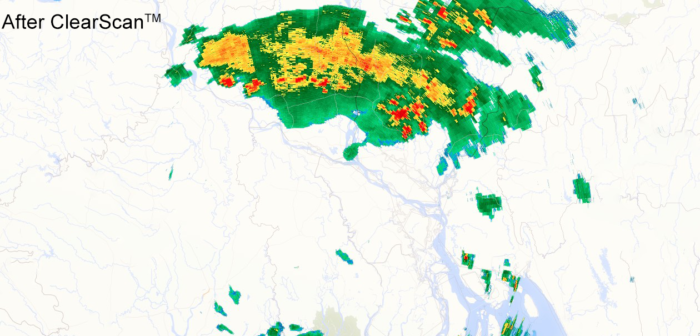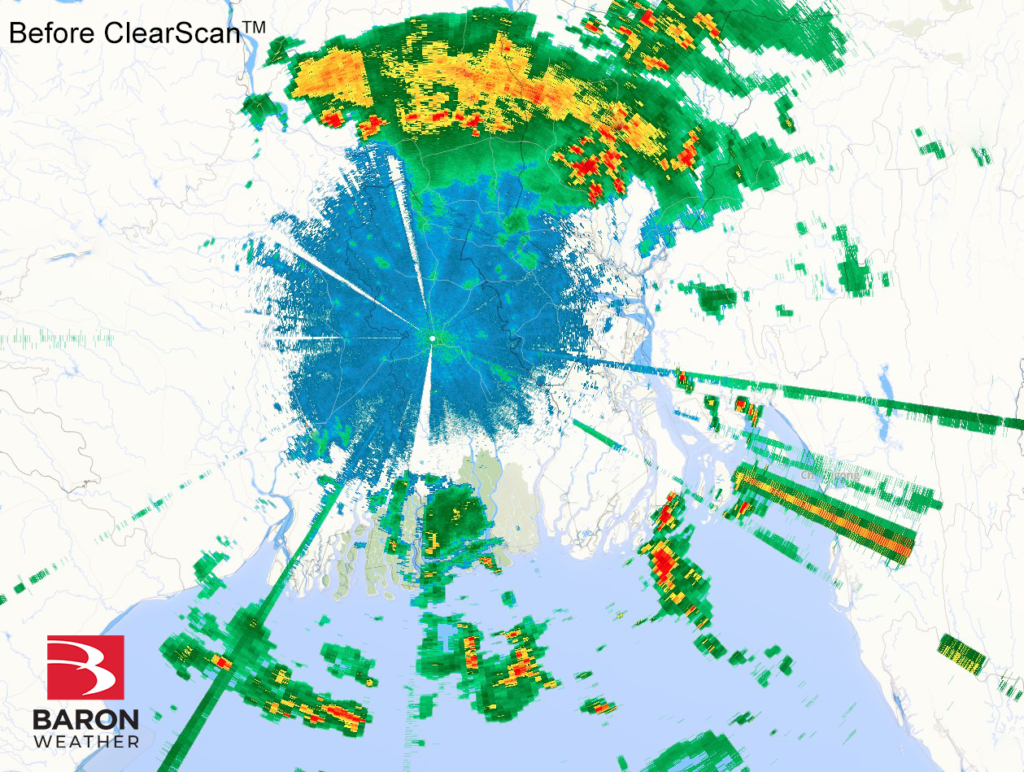Weather intelligence provider Baron has developed innovative new radar processing technology that will make dual-polarization radars even more powerful tools for solving weather and climate problems.
The Baron ClearScan radar clutter mitigation technology provides the user with clear current precipitation data. Using machine learning algorithms supported by human intervention, the Baron ClearScan learns to recognize data from actual weather targets versus radio frequency interference (RF) or anomalous propagation (AP). RF interference is caused by other electronic devices and is a growing concern as new technologies like 5G cellular signals increase the potential interference with weather radars.

Bob Dreisewerd, CEO of Baron, said, “The Baron ClearScan is another example of Baron innovation solving an issue for our customers by leveraging machine learning technology to automatically remove non-precipitation radar returns due to RF interference, wind farms, and other anomalous phenomena, ultimately improving the quality of weather radar data.”
The exclusive ClearScan technology examines reflectivity, velocity and dual-polarization data to decipher between quality radar data and anomalous propagation or radio frequency interference. The Baron ClearScan offers a hyper-local solution that can recognize AP or RF and remove it from a dual-polarization radar data display in real time.
The Baron ClearScan works well with other signal processing technology, such as Clean-AP, which specifically targets ground clutter for removal. Baron offers Clean-AP through an exclusive agreement with the University of Oklahoma. With ClearScan the removal of noise and interference takes place at the end of the signal processing, opposed to Clean-AP which happens at the signal processor. The two technologies working together provide highly effective clutter suppression.
In addition, Baron’s new Staggered Pulse Repetition Frequency (PRF) mode detects wind movement inside a storm with greater precision. This technology provides visibility of velocity couplets that cannot be seen in Dual PRF mode. The feature works well with twisting and straight-line winds, making it valuable during a tornadic event, convective thunderstorms, and tropical events.
“The implementation of Staggered PRF within the Baron radar processing ecosystem further improves the quality of radar velocity data and the ability of our customers to detect and relay critical early warning information,” Dreisewerd said.



